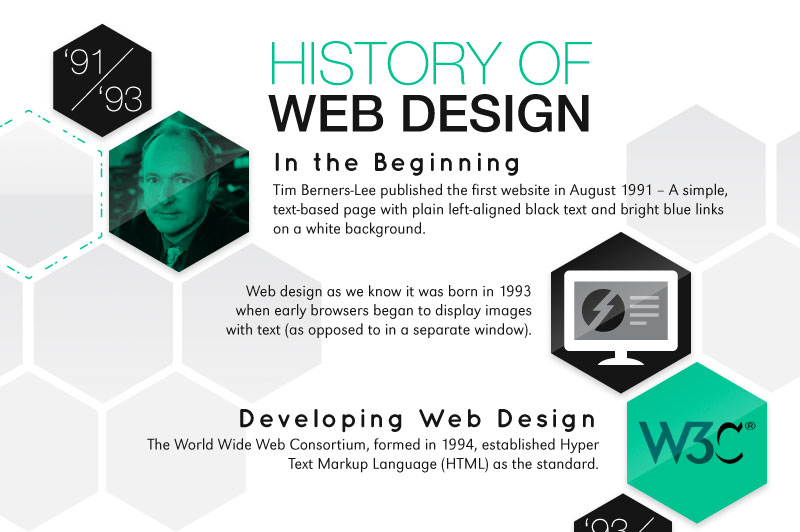The Advancement Of Site Design: From Past To Existing
The Advancement Of Site Design: From Past To Existing
Blog Article
Article By-Asmussen Wren
In the past, web sites were easy and focused on details. Navigation was straight, and layout was for desktops. Now, user experience is key. Information overviews designs for easy navigating. Receptive formats fit different devices. Today, dark mode reduces stress, and minimalist food selections improve navigation. Interactive features involve customers, and strong visuals stick out. AI assimilation enhances interaction. See exactly how style has progressed to enhance your on the internet journey.
Early Days of Web Design
In the very early days of website design, simpleness reigned supreme. Websites were fundamental, with minimal shades, fonts, and designs. The emphasis got on giving details rather than showy visuals. https://www.allbusiness.com/seo-and-sem-marketing-tips-for-limited-budgets-146323-1.html accessed the internet through slow dial-up links, so rate and performance were key.
Navigating food selections were straightforward, generally located at the top or side of the web page. Web sites were created for computer, as mobile surfing had not been yet widespread. Content was king, and developers prioritized easy readability over complex design components.
HTML was the main coding language used, and designers had to work within its restrictions. Animations and interactive functions were marginal contrasted to today's standards. Websites were fixed, with little vibrant content or customized customer experiences.
Rise of User-Focused Design
With the advancement of site design, a change in the direction of user-focused design principles has come to be significantly noticeable. Today, creating web sites that prioritize individual experience is critical for engaging visitors and accomplishing business objectives. User-focused layout involves recognizing the requirements, choices, and habits of your target market to customize the site's format, material, and includes appropriately.
Developers now perform detailed study, such as customer surveys and functionality testing, to collect understandings and feedback directly from individuals. This data-driven technique aids in creating instinctive navigation, clear calls-to-action, and visually appealing interfaces that reverberate with site visitors. By positioning the individual at the center of the layout process, websites can deliver an extra tailored and delightful experience.
Responsive layout has actually additionally become a crucial facet of user-focused layout, guaranteeing that web sites are enhanced for various devices and screen sizes. This adaptability improves ease of access and functionality, satisfying the diverse ways users connect with sites today. Fundamentally, the rise of user-focused design symbolizes a shift towards producing electronic experiences that focus on the requirements and expectations of the end customer.
Modern Trends in Web Design
Explore the most up to date trends shaping website design today. One popular trend is dark mode design, providing a sleek and modern-day appearance while decreasing eye pressure in low-light settings. One more crucial fad is minimalist navigating, simplifying menus and enhancing user experience by focusing on essential elements. Integrating navigate to this website -interactions, such as computer animated switches or scrolling results, can produce a much more interesting and interactive internet site. Responsive style continues to be important, ensuring seamless individual experiences throughout different devices. Furthermore, using strong typography and asymmetrical formats can include visual rate of interest and draw attention to particular content.
Incorporating AI technology, like chatbots for customer support or personalized recommendations, boosts user interaction and streamlines processes. Access has likewise come to be a substantial fad, with designers focusing on comprehensive layout practices to accommodate varied user needs. Welcoming sustainability by optimizing website efficiency for rate and efficiency is an additional emerging pattern in website design. Working together with customer comments and data analytics to iterate and enhance layout continuously is crucial for staying pertinent in the ever-evolving electronic landscape. By accepting these modern fads, you can create a visually appealing, straightforward site that reverberates with your target market.
Conclusion
As you reflect on the evolution of web site design from the early days to now, you can see just how user-focused design has come to be the driving pressure behind contemporary patterns.
Accept the journey of change and adaptation in web design, always maintaining the customer experience at the center.
Keep existing with the current fads and innovations, and never quit advancing your technique to produce aesthetically magnificent and straightforward web sites.
Evolve, adjust, and develop - the future of website design is in your hands.
